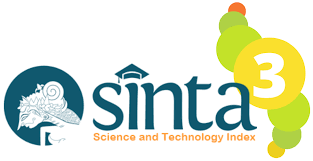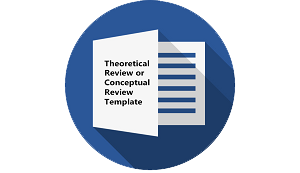Pembelajaran Bahasa Inggris Berbasis Pendidikan Non-Formal di Kampung Inggris Kediri
DOI:
https://doi.org/10.30957/lingua.v17i1.629Keywords:
non-formal education, Kampung Inggris, maturity, self-relianceAbstract
The purposes of this study are to explore non-formal teaching methods and perceptions on the non-formal settings for learning the English language in base-camp, café and examination to interact with English native speakers in Prambanan Temple. This study used a qualitative approach to assign a case study design. The study was conducted in Kampung Inggris Pare, Kediri, Indonesia in 5 weeks. A number of 30 respondents each of which 15 from AC course and 15 from CC course were selected. Of the 30 respondents, 10 were good English competence, 10 fair and 10 low. Data were analyzed using cultural thematic analysis, rate percentage, and frequency. Results show that non-formal education teaching methods are perceived by students as non-formal methods stressing in free classroom interactions and presentations. Of three sites of learning, students with good competence in English accept all as comfortable learning sites. In addition, maturity attitudes that include self-reliance, self-confidence, easy to adapt to the environment, and creativity are well performed by the students. Likewise, students with fair English competence considered camp, café and the temple at lower degrees. Maturity is also performed lower by the fair category students with the lowest degree at 60%. The low competence students, however, can receive camp only as a comfortable place to learning. All categories of maturity are performed in a low motion achieving 30% by the low competence students.
Downloads
References
Anggraini, I.S., (2016). Motivasi Belajar dan Faktor-Faktor yang Berpengaruh: Sebuah Kajian Pada Interaksi Pembelajaran Mahasiswa. Premiere Educandum: Jurnal Pendidikan Dasar dan Pembelajaran, 1(02), 34-46.
Azhari, T. and Dauyah, E., (2018). Learning Motivation of Peripheral University Students and its Relation with their English Grades. In Proceedings of MICoMS 2017 (pp. 473-478). Emerald Publishing Limited.
Azis, A, Muhamad. (2017). Analisis Peran Keagamaan terhadap Proses Pendidikan Kursus Bahasa Inggris (Studi Kasus di Kampung Ingris Pare Kediri Jawa Timur. Akademika, 22(2), 320-344.
Bogdan, Robert & Biklen, Knopp, Sari. (2007). Qualitative Research for Education: An Introduction to Theories and Methods, 5th Edition. Syracuse University: Pearson.
Candra, E. Brian & Kuspriyanto. (2017). Partisipasi Masyarakat dalam Mengelola “Kampung Inggris†Kecamatan Pare Kabupaten Kediri (Studi Kasus “Kampung Inggris†Kecamatan Pare Kabupaten Kediri). Swara-Bhumi E-Journal Pendidikan Geografi Unesa. 5(6). https://jurnalmahasiswa.unesa.ac.id/index.php/swara-bhumi/article/view/23957/21897
Creswell, John. (2006). Qualitative Inquiry and Research Design: Choosing among Five Approaches. California: Sage.
Dörnyei, Z., (2009). The L2 motivational self system. Motivation, language identity and the L2 self, 36(3), 9-11.
Ellis, N.C., (2013). Second language acquisition: The Routledge Handbook of Second
Language Acquisition. London: Routledge Inc.
Fatiha, M., Sliman, B., Mustapha, B. and Yahia, M., (2014). Attitudes and motivations in learning English as a foreign language. International Journal of Arts & Sciences, 7(3), pp.117-128.
Gardner, R.C, (1985). The Attitude/Motivation Test Battery: Technical Report. Ohio: University of Western Ohio.
Israwati, I., (2018). Pengaruh Strategi Pembelajaran dan Motivasi mengajar Guru terhadap
Hasil Belajar Mahasiswa. Jurnal Serambi Ilmu, 19(2), 65-124.
Knowles, Malcolm Sherperd. (1977). The Adult Learner: The Definitive Classic in Adult Education and Human Resources Development. London: Prentice Hall. Inc.
Krashen, S. (1982). Principles and practice in second language acquisition. Oxford: Pergamon Press.
Krashen, S. (2003). Explorations in Language Acquisition and Use. Portsmouth: Heinemann.
Krashen, S.D.; Terrell, T.D. (1983), The Natural Approach: Language Acquisition in the Classroom, San Francisco: The Alemany Press, p. 191, ISBN 0-88084-005-6
Krippendorff, Klaus (2004). Content Analysis: An Introduction to Its Methodology. California: Sage. pp. 87–89. ISBN 978-0-7619-1544-7.
Lan, Y. J., Hsiao, I. Y., & Shih, M. F. (2018). Effective learning design of game-based 3D virtual language learning environments for special education students. Journal of Educational Technology & Society, 21, 213-327.
Mukhamad, Muhroji. (2020). Kajian Pragmatik Interaksi Verbal Pembelajar Bahasa Inggris di Luar Kelas di Lembaga Pendidikan Non-Formal Kampung Inggris. Disertasi Doktor. Surakarta: Program Doktor Linguistik, Universitas Sebelas Maret Surakarta.
Nurhayati, Hendrawaty, Nurmala & Angkarini, Tri. (2013). The Acquisition of English as A Foreign Language in Pare East Java (Kampung Inggris) (A Case Study of What and How the Acquisition of English in Pare). Dieksis. 5(2), 81-88.
Oktaviana, Fadilla. (2018). A Naturalistic Study: English Instruction at English Course in Kampung Inggris. Loquen: English Studies Journal. 11(1), 69-91. Website: http://jurnal.uinbanten.ac.id/index.php/loquen/index
Rachmandani, F. Yustika. (2017). Analisis Pengaruh Kampung Inggris terhadap Kesempatan Kerja di desa Tulungrejo, Kecamatan Pare, Kabupaten Kediri. Jurnal Ilmiah Mahasiswa FEB. 5(2), https://jimfeb.ub.ac.id/index.php/jimfeb/article/view/3909/3446
Richards, J.C. (2014). The Changing Face of Language Learning: Learning Beyond the Classroom. RELC Journal, (2014), 1-18. DOI: 10.1177/0033688214561621.
Spradley, James P. (1980). Participant Observation. Orlando, Florida: Harcourt College Publishers. pp. 58–62. ISBN 0-03-044501-9.
Sudjana, D. (2010). Pendidikan Luar Sekolah, Sejarah Perkembangan Falsafah dan Teori Pendukung, Asas. Bandung: Falah Production.
Ushioda, E., (2016). Language learning motivation through a small lens: A research agenda. LanguageTeaching, 49(4), 564-577.
Walgito, Bimo. (2010). Pengantar Psikologi Umum. Yogyakarta: Andi Offset.
Wibowo, Arining. (2015). Kampung Inggris di Lingkup Sekolah sebagai Prasarana Alternatif Pembelajaran bahasa Inggris Intensif. Jurnal Ilmiah Bahasa dan Sastra. 2(1), 13-21.
Yin, R. K. (2017). Case study research and applications: Design and methods. Los Angeles: Sage publications.
Downloads
Published
How to Cite
Issue
Section
License
Authors who publish with this journal agree to the following terms:
- Authors retain copyright and grant the journal right of first publication with the work simultaneously licensed under a Creative Commons Attribution-ShareAlike 4.0 International License that allows others to share the work with an acknowledgement of the work's authorship and initial publication in this journal.
- Authors are able to enter into separate, additional contractual arrangements for the non-exclusive distribution of the journal's published version of the work (e.g., post it to an institutional repository or publish it in a book), with an acknowledgement of its initial publication in this journal.
- Authors are permitted and encouraged to post their work online (e.g., in institutional repositories or on their website) prior to and during the submission process, as it can lead to productive exchanges, as well as earlier and greater citation of published work (See The Effect of Open Access).















